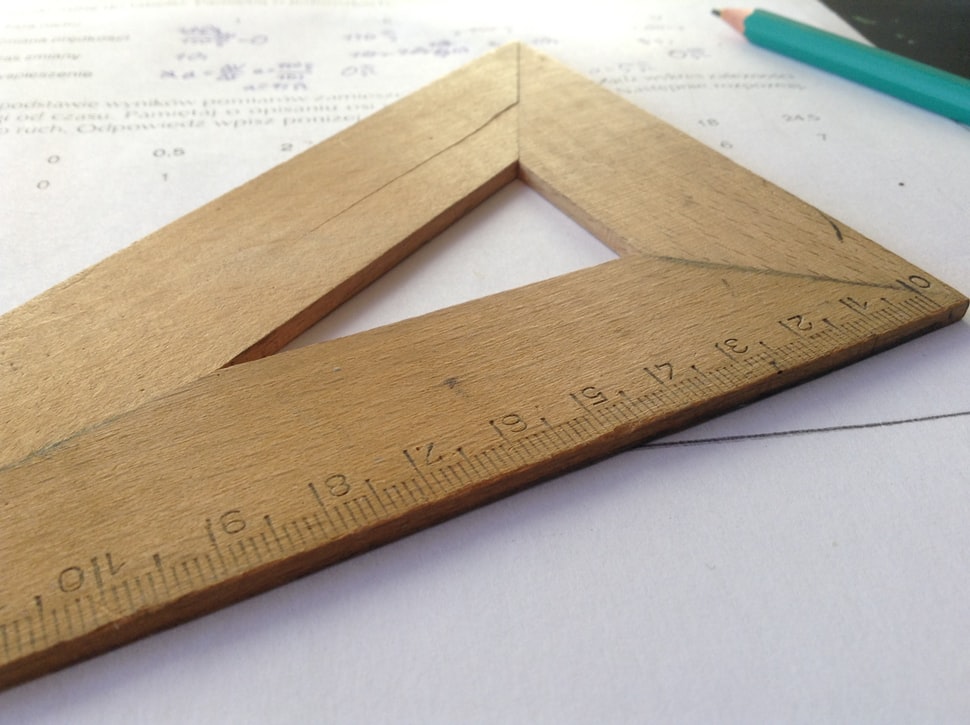Welcome to our five-part series on how to decide where to donate effectively. We’re going to go on an in-depth journey through the psychology of donations, the best ways to tell whether a charity is good at what they do, and how to actually give most effectively.
- What drives donations
- Choosing a cause to support
- Good ways to choose a charity
- Bad ways to assess charities
- The best ways to give
Give if you want to
What we are about to outline is an intensely rigorous approach to choosing which charity to donate to. Realistically, it is a lot of work. So let me lead with a simple maxim – you should give to a charity if you want to. If a friend of yours asks for a donation because they’re running a marathon backwards or something and you want to support them, don’t let this article hold you back. Donate to the cause and enjoy doing so.
Why would I say this, when the entire point of this series is to teach you how to be more effective and thoughtful in your donations?
I say it because no matter which charity you donate to, your donation will likely do some good. Not only will you feel happier after donating, you will certainly do more good for the world than if you spend the money on, say, biscuits. Some charities will do more good than others, for sure. But they will all do more good than you spending the money on yourself.
This guide is to help you decide how to decide between charity A and charity B. But if it’s a choice between giving to charity A and buying some biscuits, just give. The last thing I want is for anyone to read this article and donate less.
A simple maxim
I’m a big fan of Michael Pollan’s food rules (eat food, not too much, mostly plants). They’re a simple summary of some complex ideas. So, in that vein, here are some rules for donations:
- Donate to charities.
- Not based on ratios,
- But on if they measure their impact.
Let’s explore each of these in turn.
Do not pass go
But first – have you decided that the cause that you most care about is human poverty? If so, I have good news! You don’t need to do any of the following steps, because some amazing organisations have done it already for you.
Go visit Givewell, look at their recommended charities, and you’re set. Givewell have spent a substantial amount of time and effort to identify charities that do amazing work and will mean that your donation will help organisations leading substantial change.
Everyone else, let’s get practical.

Narrowing down to a shortlist
Even once you’ve chosen your cause, a brief Google search or even a look around ChangePath will reveal a huge number of charities working in that space. So before we start looking deeply into individual charities, let’s set some broad filters to get down to a shortlist.
What size charity are you looking for?
Think about whether your cause benefits from scale. For some causes, it can be sensible to donate to larger charities as they have the resources to make an impact. Medical research is like this – it costs at least $100,000 to fund a single research project, and grants often run into the millions of dollars. Smaller charities can be stuck in a situation where they can’t fund research at all. Whereas there are other causes where being small is good – for instance a cause focused on a local area or cultural group. Being small can provide focus.
What should the charity do?
How do you wish to affect your cause? Causes can be affected in myriad different ways. Take heart disease for example – one charity might focus on prevention, helping to educate school kids and make sure they do exercise. Another might focus on medical research, hoping to save lives in future. Both are entirely valid ways for a charity to spend its efforts, and it’s up to you which you would prefer. This may come back to your preference for helping people now vs later, which we discussed last post.
Make sure it’s a charity
First, you should do some basic due diligence. Check that the charity is registered with the ACNC. If it isn’t, it isn’t a charity. It’s also worth checking that it is up-to-date on its reporting to the ACNC.
Though, importantly, being registered as a charity doesn’t automatically mean it is tax deductible. You will need to check the ATO ABN lookup page for that.
What makes a good charity?
Be warned, there is no easy answer. Finding a good charity is more than star ratings. There are a lot of very difficult questions to investigate.
Now that you’ve chosen a cause, you want to find an organisation that will make the biggest impact on that cause. So how do you tell if an organisation will have an impact?

Checking the evidence base
The first way to identify a good charity is by the evidence base behind what it does.
Why is that important? Let’s take an example – a charity that wants to reduce the number of people that binge drink. They decide that one of the ways that they can do that is by putting up posters in bars talking about the evils of binge drinking. To try and get additional funding for their ‘posters in bars’ program, the charity runs a trial. They want to see how effective it is. So they run an experiment, where they test how much people drink in bars with and without the posters.
This is a real study, done by the Drinkaware Trust in the UK. What they found was that having the posters up in a bar didn’t mean people drank less.
They drank more.
Why? The study [act_tooltip title='(1)’ content=’ https://www.lsbu.ac.uk/stories/research-helping-stop-binge-drinking‘] doesn’t say. Perhaps people are just naturally belligerent. Maybe talking about binge drinking is a prompt to do so. Regardless, it goes to show that what you would assume is a normal, straightforward intervention just doesn’t work. As it turns out, changing human behaviour is difficult. Really difficult.
Another, more famous example is the Scared Straight initiative in the US. They took ‘bad’ kids, took them to prisons, and showed them how terrible it was. The idea was to make them too afraid to commit crimes.
The effect was the opposite – kids that went on the program committed more crimes than equivalent kids that didn’t. [act_tooltip title='(2)’ content=’ https://psychcentral.com/blog/scared-straight-not-really/‘]
In fact, one meta-study found that 90% of studied educational interventions either had a weak effect or none at all. [act_tooltip title='(3)’ content=’ ttps://80000hours.org/articles/effective-social-program/ ‘] As it turns out, we are very bad at predicting what works.
This is why evidence is so important. The absolute gold standard for charity evidence is the randomised controlled trial, which attempts to test the intervention by holding all other factors equal.
If a charity is running a program that has been scientifically proven to be effective, you are much more likely to create impact by donating to them than you are to a charity whose interventions are untested.
Evidence isn’t everything
Of course, the same reason that many interventions don’t work is also a reason to be cautious about how to interpret these studies. Humans are complex. Randomised controlled trials work off the assumption that the two groups are the same except for the intervention. Not only is that a big assumption, in order to get groups that are vaguely the same you need to exclude complex cases. There are also good arguments that an over-emphasis on evidence privileges certain western forms of thinking and makes it harder for Indigenous charities or methods to be funded.
There’s also the fact that running trials is exceptionally expensive. Running a full trial can cost millions of dollars in some cases. So there’s a lot of charity work that doesn’t have an evidence base because there isn’t the money to invest in it.
What’s more, reliance on evidence means that you’re ignoring new and innovative techniques. It’s entirely possible that the best ways of solving a problem are not the ones that we already have – instead we should be investing in new interventions or doing more research.
Finally, there are causes where requiring evidence doesn’t make a lot of sense, like the arts – imagine an evidence-based ballet.
So if proven programs aren’t always a reliable way of telling whether a charity is any good, what should we use instead?

Measurement and evaluation
As we outlined above, our instincts about what works and what doesn’t are often wrong. This makes it essential that charities measure and evaluate their own programs to make sure that they are actually accomplishing anything. Put simply, if a charity doesn’t measure what it does, it doesn’t know if it works.
Unlike with corporates, there’s no obvious measure of how good a charity is or how effective it’s being. If you’re a business, you can tell whether you’re making something that people want by how many people want to buy it or how much money you’re making. Measuring the effect of a homelessness program, for example, is far more difficult – you need to invest in figuring out what the short and long term outcomes are.
Unfortunately, measurement and evaluation isn’t particularly exciting. Many charities skimp on it because they figure the money is better spent on actually helping people, because they ‘already know’ the program works. Donors, too, are often sceptical – measurement falls into the dreaded bucket of overhead that people get wrongly angry about (more on that in the next article).
Yet a charity with the best of intentions can accomplish nothing if it doesn’t measure what it does. More than that, even if they do have a good program, it can never improve if they don’t identify which aspects work best.
So what you’re looking for are charities that have a solid measurement and evaluation plan in place – they can prove they are measuring the short and long term outcomes of the work they do. This can be quite difficult to find out, so you will need to read through websites and annual reports. But it’s a very important predictor of whether your donation will truly have a long-term impact.
Core predictors
Beyond measurement and evaluation, there are a few key indicators of good charity governance that will increase the likelihood that your donation will be well managed.

Transparency
A charity that is transparent is one that gives you all the information you need to make a decision. It shows they have confidence in the work they do and their approach.
Look for:
- Publicly available annual and financial reports
- Publicly listed board members
- Admitting of mistakes
- Privacy policy

Track record
While past performance does not always predict future success, a charity that has been historically poorly managed has more of a burden of proof than one that has been well managed. Of course, charities that are transparent enough to reveal their past failures (rather than having them dragged out by the press) are to be lauded as well.
Look for:
- Previous successes (and failures)
- History of good measurement and evaluation
- History of good financial management

Governance
A well-governed charity has checks and balances to make sure it continues to use money wisely and keeps the end beneficiary always in mind.
Look for:
- Board independence – is the board comprised mostly of staff? Are there representatives of the people the organisation is trying to help on the board?
- Board skills & diversity
- ACNC reporting – are they up-to-date?
- Audited financial statements (once the charity is beyond a certain size)

Skills and expertise
Charities that have a strong skill base and a good self-reflective culture are more likely to make less mistakes and learn from the mistakes they make. The involvement of end beneficiaries is especially important, as without it charities may solve for the wrong problem or not deal with all the relevant issues.
Look for:
- Responding to success and failure
- Self-assessment and self-skepticism
- Industry experience or lived experience

Strategy
Charities should have a strategy and follow it. This will not only ensure sustainability but also it will also give you a clear idea of where they are hoping to go in future.
Look for:
- Well-developed strategic plan
- Following of previous strategic plans
- Sustainable fundraising strategy

Values
Finally, a strong set of values can help ensure that a charity is aligned with all its staff and mission.
Look for:
- Well-defined values that match with the aim of the organisation
Finding good charities
You will probably have noticed that none of the metrics above are simple, or easy to judge. It takes significant time and effort to assess even a single charity. Surely there is a simple way to find the best charity? Sadly, there isn’t. Changing the world is a difficult, messy exercise, and finding charities where you will definitely be impactful is hard.
Unfortunately,
this difficulty means that a lot of people are searching for an easy answer.
This has led to some rather terrible metrics being used to decide which charity
to donate to. That’s a topic for the next article.
And how do you actually implement these
recommendations in a way that makes sense? Well, that’s a topic for our final
article on how to give, which will tie it all together.
